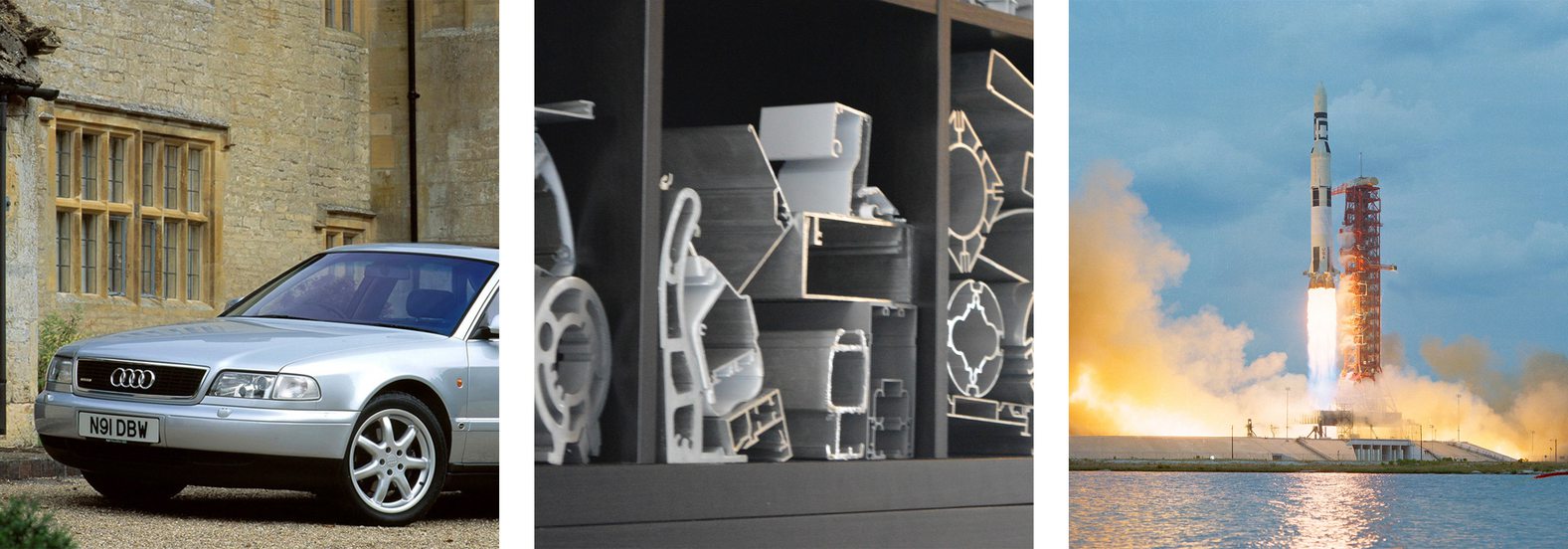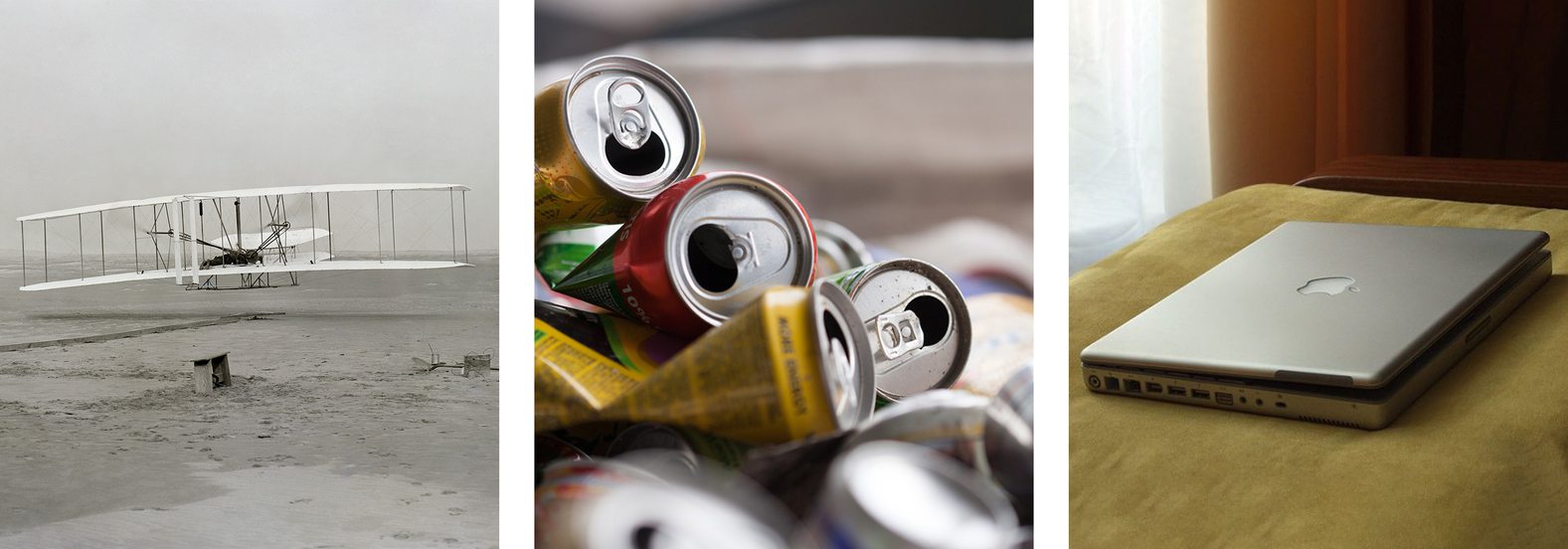Aluminum innovations.
Aluminum, a metal with seemingly endless possibilities, has revolutionized product development over the years. From aircraft to consumer electronics, aluminum's versatility and durability have led to some legendary innovations.

- Aluminum in aviation
One of the most iconic product developments involving aluminum is undoubtedly its application in the aviation industry. The revolutionary aircraft, the Wright Flyer, that the Wright brothers launched in 1903 was still made of wood and fabric. The use of aluminum in aviation began to be taken seriously in the 1930s, with the introduction of the Boeing 247, the first aircraft with an all-aluminum frame and covering. This marked the beginning of a new era in aviation, with aluminum as the dominant material for its lightness and strength. - Aluminum in space travel
The race to space in the 1960s also saw the rise of aluminum in the space industry. The Saturn V spacecraft, which brought the Apollo astronauts to the moon, was largely made of aluminum alloys. The use of aluminum in spacecraft became a standard practice due to its unique combination of strength and weight, essential for overcoming gravity and reaching space. - Aluminum in consumer electronics
With the rise of modern technologies, aluminum entered consumer electronics. The launch of the Apple PowerBook G4 in 2001, with a distinctive aluminum chassis, was a turning point in portable computing design. Aluminum not only offered durability, but also added aesthetic value to electronic devices. The success of the PowerBook G4 set the trend for the use of aluminum in other premium laptops and smartphones. - Aluminum in the automotive
The automotive industry also underwent a transformation through the use of aluminum. The introduction of the Audi A8 in 1994, with its aluminum space frame, marked a breakthrough in automotive technology. Aluminum reduced the weight of the car, resulting in better fuel efficiency and performance. Contemporary cars, such as the Tesla Model S, make extensive use of aluminum to provide an ideal balance between safety and efficiency. An example of the power of aluminum casting can be found in the production of engine blocks for modern automobiles. Using advanced casting techniques, complex shapes can be cast with high precision, resulting in engine parts with exceptional strength and heat dissipation. - Aluminum in packaging industry
The packaging industry has also benefited from aluminum innovations, especially in beverage packaging. Introduced in the 1950s, the can revolutionized the way drinks are packaged and consumed. Aluminum provides an excellent barrier against light, air and moisture, extending the shelf life of products and maintaining freshness. - Aluminum extrusion: precision design
An excellent example illustrating the benefits of aluminum extrusion is the specially designed profiles used in greenhouse construction. Using extrusion technology, aluminum profiles can be custom-made to provide optimal structural support for greenhouses. Whether it's the roof frame, doors or ventilation grilles, aluminum extrusion provides the flexibility to create custom profiles that are both lightweight and durable. This technology has not only contributed to greenhouse efficiency, but also to the promotion of sustainable agricultural practices worldwide.

In conclusion, aluminum has left an impressive mark on various sectors of product development over the years. From aerospace to consumer electronics, aluminum's versatility and durability have led to legendary innovations that have changed the way we travel, communicate and consume. These product developments not only mark technological advances, but also illustrate the continued evolution of aluminum as a crucial element in the modern world.
Aluminium course at Fabrique Invent.
Theo shares his knowledge and experience every year.
Use this technique to make your designs more sustainable.
A brief explanation of the phenomenon Design For (Dis)Assembly.
Get To Know Us: Mike de Jong
In the series 'Get to know us' we have an interview with a different colleague each time. This time we get to know senior design engineer Mike a little better, who has been working at Fabrique Invent for 8 years now.